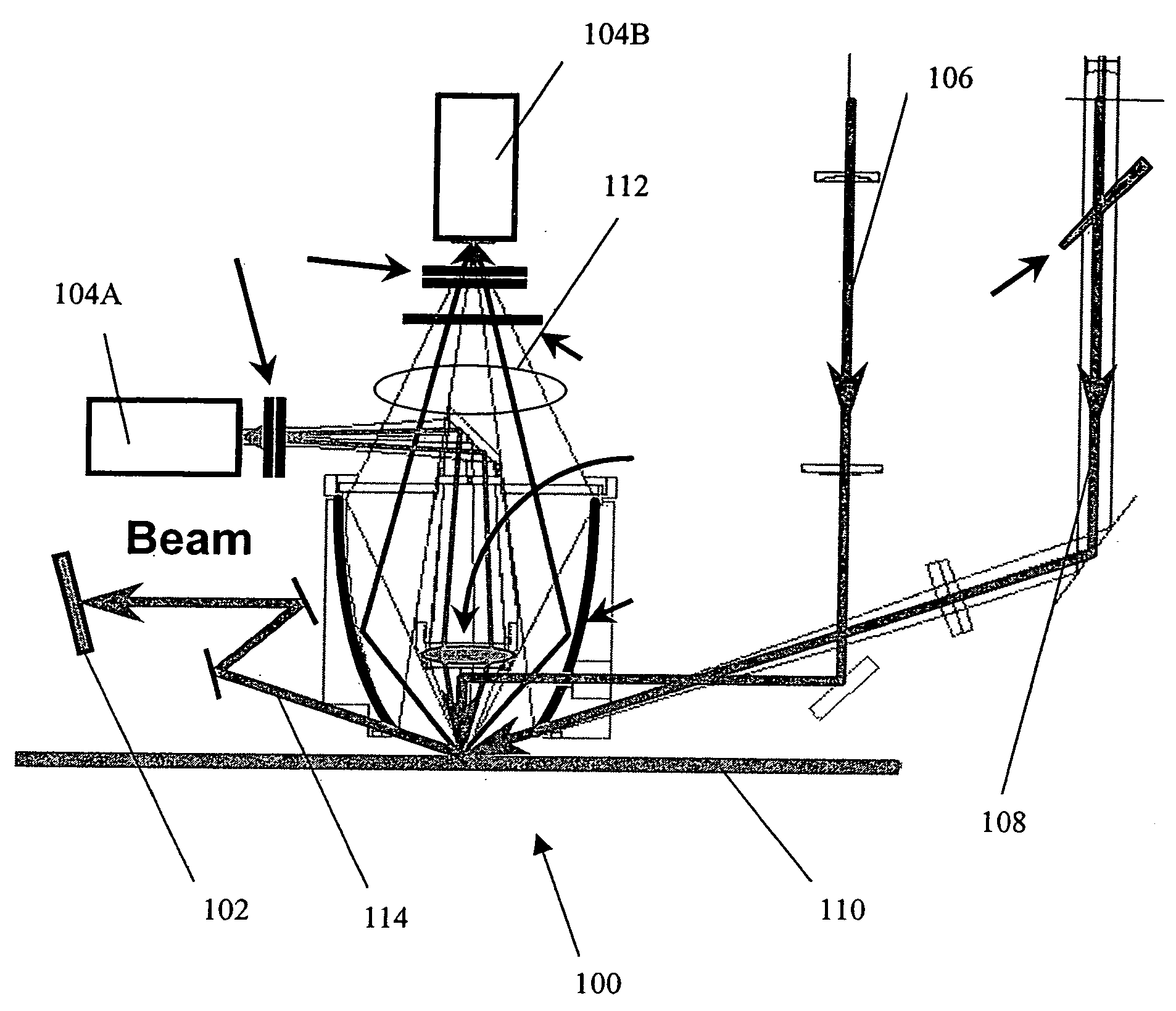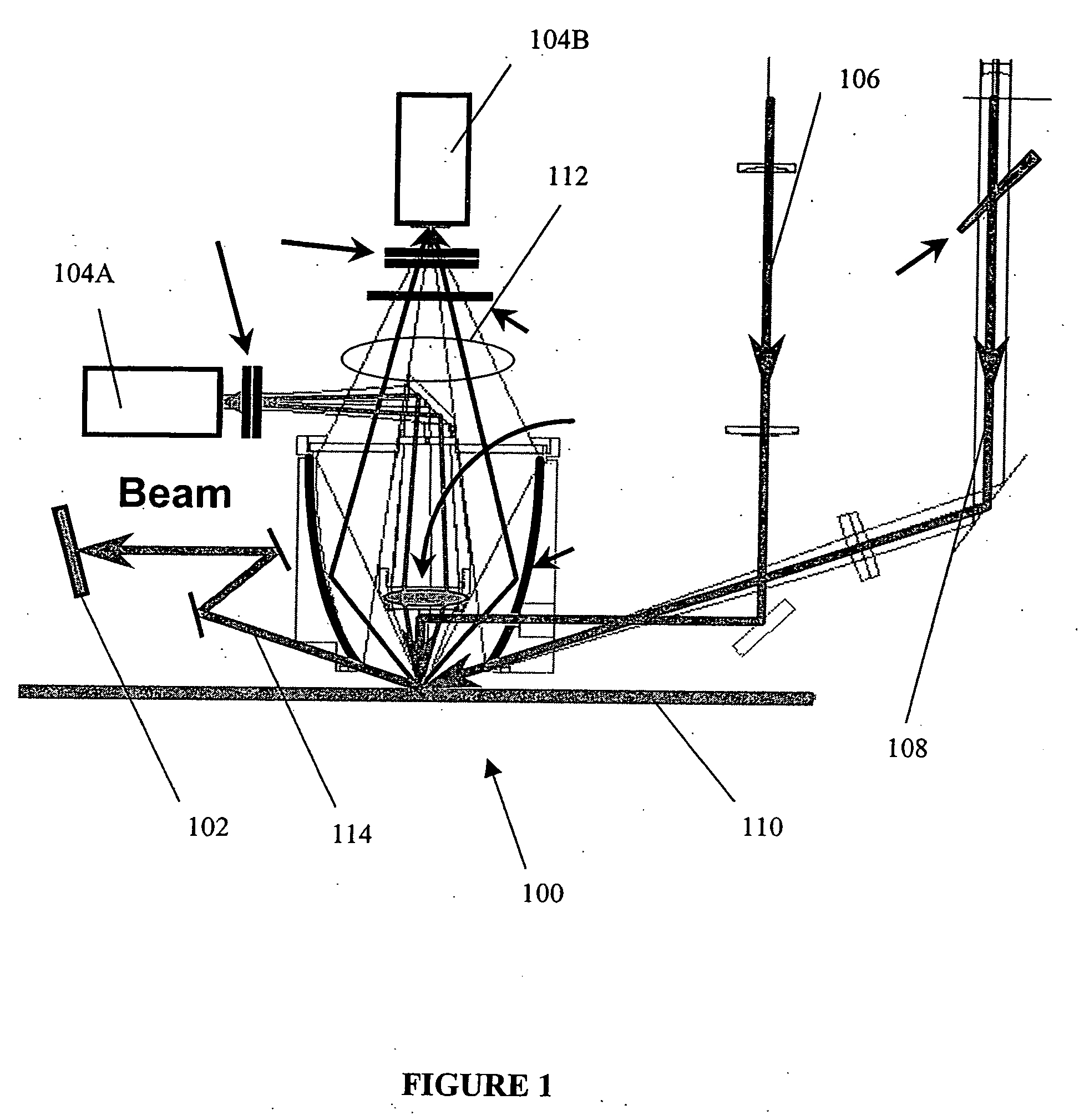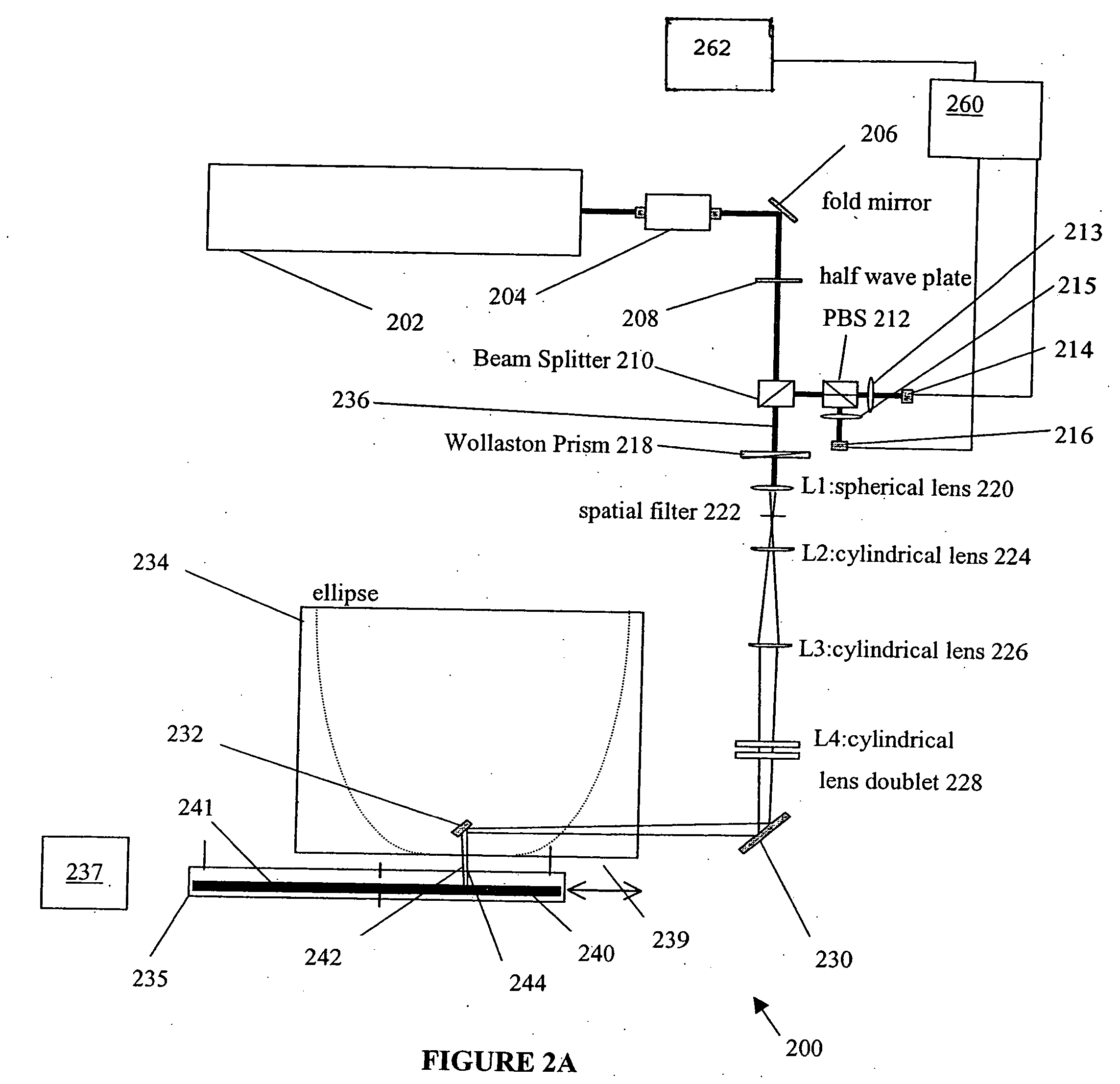Method and apparatus for detecting surface characteristics on a mask blank
a mask and surface characteristic technology, applied in the field of lithographic mask fabrication, can solve the problem of extremely sensitive detection of the dic techniqu
- Summary
- Abstract
- Description
- Claims
- Application Information
AI Technical Summary
Benefits of technology
Problems solved by technology
Method used
Image
Examples
Embodiment Construction
[0023]FIG. 1 illustrates one embodiment of a surface scanning system 100 for bright field (BF) and dark field (DF) radiation detection. The scanning system 100 comprises a normal incidence light / radiation beam 106, an oblique incidence light beam 108, a surface 110, a dark field radiation sensor 104A, another dark field radiation sensor 104B and a bright field radiation sensor 102. The sensors 102, 104A, 104B may comprise transducers, detectors, collectors, charge-coupled devices (CCDs) or other types of radiation sensors.
[0024] Dark field detection refers to the collection and registration of scattered radiation 112 from the surface 110. Dark field detection is sensitive to small defects and sharp edges. Dark field techniques may be very effective for revealing particles and other types of efficient light scatterers on the surface 110. But some surface topography, such as large, shallow defects or dimples, and some crystallographic defects, such as slip lines and stacking faults, ...
PUM
 Login to View More
Login to View More Abstract
Description
Claims
Application Information
 Login to View More
Login to View More - R&D
- Intellectual Property
- Life Sciences
- Materials
- Tech Scout
- Unparalleled Data Quality
- Higher Quality Content
- 60% Fewer Hallucinations
Browse by: Latest US Patents, China's latest patents, Technical Efficacy Thesaurus, Application Domain, Technology Topic, Popular Technical Reports.
© 2025 PatSnap. All rights reserved.Legal|Privacy policy|Modern Slavery Act Transparency Statement|Sitemap|About US| Contact US: help@patsnap.com



